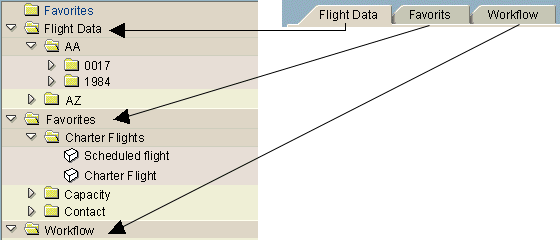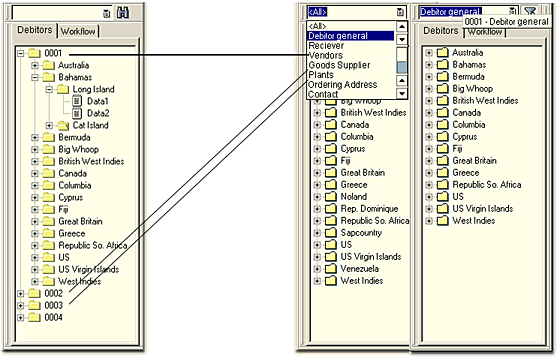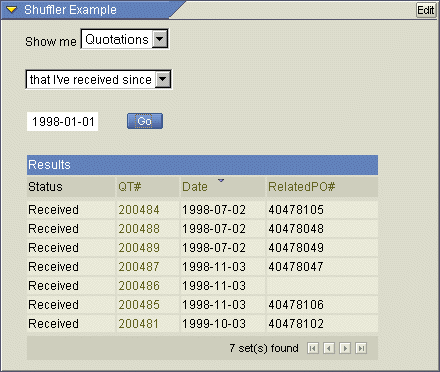Reducing Hierarchy Levels
Various options are available for "slimming down" hierarchies, and they differ in their usage and simplicity of implementation. The common starting point of all these techniques is moving the upper-most hierarchy levels to a type of "filter" or "view" mechanism. These variants are called tabstrip, filter and shuffler.
TabStrip
 |
Figure 1: Converting nodes to tabstrips |
A tabstrip allows the user to switch between different views of a dataset. Due to the relatively large space requirements, only a small number of nodes (3-5) can be modeled.
Summary: Tab strips
- Display different views
- Display a small number of categories
Filter
A filter reduces the amount of displayed data by setting a criterion. Different design options are available for entering the criterion. The example in the following figure shows the conversion of hierarchy level "Flight number" to a drop-down list box.

Figure 2: Filter for reducing the number of hierarchy levels
The advantages of the filter solution are its relatively low space requirements and its ability to model a relatively large number of nodes. However, not all the "views" are visible at the same time, and the user has to perform an additional interaction to change the view.
Summary: Filter
- Suitable for modeling nodes
- Reduces a medium-sized number of categories
- Data is filtered and displayed as views
Shuffler
The shuffler concept extends the filtering of data described above with two additional aspects. First of all, a shuffler usually consists of a collection of queries, for example, a combination of order numbers created during a specific time interval. Secondly, the variable components of the query are embedded in a semantic relationship - that is, a single sentence. For example, this sentence could say "Show me all the order numbers that were created in the last year". Theoretically, each variable component enables you to roll out one hierarchy level in a structure.

Figure 3: Example of a shuffler
The figure shows an example of how a shuffler can be used to reduce a three-level hierarchy (object type, processing type, and processing interval) to a simple list.
Summary: Shuffler
- Suitable for modeling complex dependencies
- Formulates the filter criteria in "natural" language
- May be complex to program
Source: SAP R/3 Style Guide